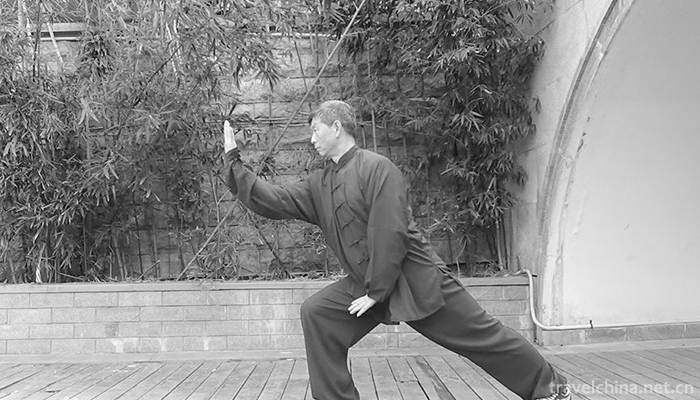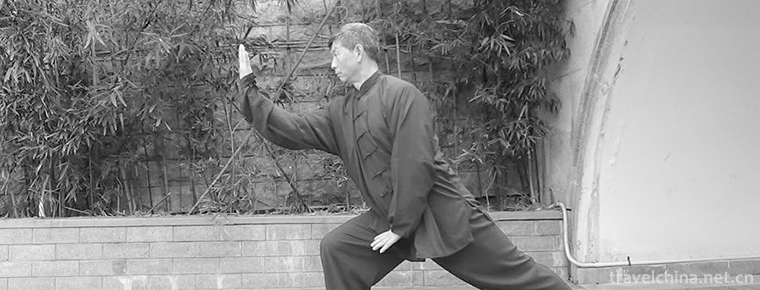Linking Luhe boxing
Linking Luhe boxing
Xinyi Liuhe Quan, also known as Xinyi Quan and Liuhe Quan, is one of the most famous excellent types of boxing in China, which combines fighting, fitness, self-defense and health preservation. It is one of the traditional Chinese boxing, an important part of Chinese martial arts culture and Oriental mysterious culture. From mind to business, and from mind to boxing.
According to legend, Xinyiquan was created by Jijike of Shanxi Province in the late Ming and early Qing Dynasties, and later by Ma Xueli of Henan Province, which has been passed down to the present day. In 2007, it was listed in the first batch of provincial intangible cultural heritage.
On June 7, 2008, Xinyi Liuhe Quan was listed in the second batch of national intangible cultural heritage list with the approval of the State Council.
brief introduction
Xinyi Liuhequan is also known as the technique of guarding holes and dust. As the name implies, this boxing is also called Xinyiquan because it is from mind business and from mind to mind.
Xinyiquan is legendary created by Ji Jike, a martial artist in the late Ming and early Qing Dynasties. Since the foreigners came to the Central Plains, there was a strong anti-Qing thought at that time. Later, after arriving at the Shaolin Temple in Henan Province, they stayed there to teach because of their excellent martial arts. During their stay, they studied deeply the Five Elements Quan which was prevalent in Shaolin in the Ming Dynasty. Then one day, when the two chickens were fighting, they realized their reason and created a six-in-one relationship. Later, Xinyi Liuhequan has been a major branch of Henan Xinyi Liuhequan for hundreds of years since it was passed down from Luoyang personage Ma Xueli.
When practicing mind boxing, there are requirements of "outside three-in-one" and "inside three-in-one". The so-called "three-in-one" refers to "shoulder and crotch, elbow and knee, hand and foot", that is, all parts of the body should cooperate with each other in the exercise of boxing; while the "three-in-one" refers to "mind and agreement, will and Qi, Qi and strength", that is to say, it is the combination of inner mood and punch, strength and so on, that the power can be exerted. The exercise route of Xinyiquan is mainly straight forward and backward, and the footwork is steady and solid. The ten shapes of Xinyiquan imitate the actions of dragon, tiger, horse, monkey, chicken, kite, swallow, snake, bear and eagle in attacking, crossing, hunting and dodging. They have obvious offensive and defensive consciousness. Each shape has its own unique meaning. In terms of recruiting style, they are mostly single-form, while the routine only has four beats and one set, and there are also two and a half created by later generations, and so on. PS: Six-in-one also refers to the combination of chicken leg, eagle-catching, dragon body, bear's arm, tiger's embracing head and thunder.
Zhoukou Xinyi Liuhe Quan has developed rapidly, spreading not only to Beijing, Shanghai, Anhui, Hubei, Hong Kong, Taiwan and other places, but also to the United States, Australia, Canada, South Korea, New Zealand and other countries and regions


-
1.Ruoergai CountyZoige County
Zoige County is located in the northeastern edge of the Qinghai-Tibet Plateau
Time 2018-10-12 -
2.Tianjin Panshan Scenic Area
Tianjin Panshan Scenic Area, located 15 kilometers northwest of Jixian County, Tianjin City, covers an area of 106 square kilometers
Time 2018-11-24 -
3.Zhenjiang Sanshan Scenic Area
Zhenjiang Sanshan Scenic Area is located in the southwest of Jiangsu Province and on the South Bank of the lower reaches of the Yangtze River
Time 2018-12-06 -
4.Fenghua Xikou Tengtou Tourist Scenic Area
Fenghua District, Ningbo City, Zhejiang Province, is under the jurisdiction of the established towns, the first batch of famous national landscape tourism towns
Time 2018-12-07 -
5.Beijing Hangzhou Grand Canal Museum
The Beijing-Hangzhou Grand Canal Museum of China is located on the south side of the Canal Cultural Plaza in Gongshu District, Hangzhou City, Zhejiang Province, adjacent to the Gongchen Bridge, the te
Time 2018-12-22 -
6.jingyuetan national forest park
Jingyuetan, National AAAAA Class Tourist Scenic Spot, National Scenic Spot, National Forest Park, National Civilized Scenic Spot Demonstration Site, National Water Conservancy Scenic Spot, National Na
Time 2018-12-26 -
7.Guan Tang hot spring
Guantang Hot Spring is located in Tangtou Town, Linyi City, Shandong Province, on the East Bank of Yihe River. The hot spring covers an area of nearly 260 Mu and has a construction area of 100,000 squ
Time 2019-01-13 -
8.Production Techniques of Black Tea
Qimen Black Tea is the only black tea among the top ten famous teas in China. It is produced in Qimen County, Anhui Province. Tea production in Qimen has a long history, which can be
Time 2019-05-03 -
9.Hui folk instrumental music
Hui folk instrumental music is a long-term life practice and cultural activities of the Hui people in Ningxia, inheriting ancient instruments of Ningxia and northwest frontier fortress instruments and
Time 2019-05-04 -
10.Long Drum Dance of Yao Nationality
Chinese Yao folk dance. Popular in Guangdong, Guangxi, Hunan and other provinces where Yao people live together, most of them perform on traditional Yao festivals, harvest celebrations, relocation or
Time 2019-07-11 -
11.Southwest University of Science and Technology
Southwest University of Science and Technology is located in Mianyang City, Sichuan Province. The school is a university built jointly by the Sichuan Provincial People's Government and the Ministry of
Time 2019-08-31 -
12.Climate of Luzhou
Luzhou city belongs to subtropical humid climate zone, and the three-dimensional climate is obvious in the southern mountainous area. It has high temperature, sufficient sunshine, abundant rainfall, four distinct seasons, long frost free period, temperature, light and water in the same season
Time 2020-12-14